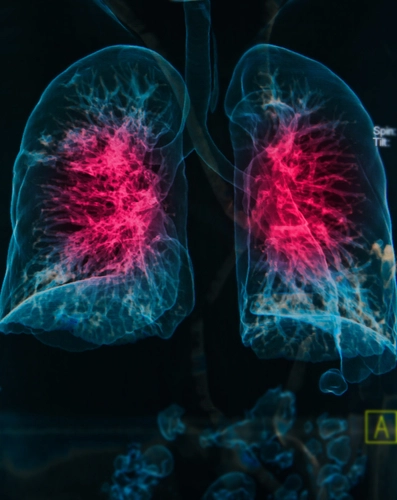Follow This Advice for Accurate Seasonal Allergy Coding

This comprehensive guide to the allergic rhinitis codes is nothing to sneeze at. You know that summer is on its way when you start to hear the sneezing in your waiting room. Time to bookmark J30.1 (Allergic rhinitis due to pollen) in your ICD-10 in preparation. But does that really make you ready for allergy season? Is J30.1 the only code you need? There’s a lot more to seasonal allergy coding than you think, so we prepared this guide to help you deal with this common complaint. Distinguish Between Seasonal Allergy Codes … While J30.1 is your go-to code for hay fever and pollen-induced allergies, you don’t want to overlook some of the other codes in the J30 (Vasomotor and allergic rhinitis) category if your provider’s notes specify similar conditions. Those other choices include: Coding caution: Confusingly, ICD-10 has a second code for seasonal allergic rhinitis: J30.2. However, if you know the etiology of the two conditions, you will be able to distinguish between them easily. “Seasonal allergic rhinitis can occur in spring, summer and early fall,” says Melanie Witt, RN, CPC, MA, an independent coding expert based in Guadalupita, New Mexico. “The typical causes are airborne mold spores, dust mites, or pollens from grass, trees and weeds. Since J30.1 specifically cites pollen as the cause, you would report J30.2 if the airborne mold spores or dust mites cause the condition,” Witt notes. … and Other Similar Sounding Conditions “In many cases, the provider will not always document the trigger or reason for the allergic rhinitis,” cautions Chelle Johnson, CPMA, CPC, CPCO, CPPM, CEMC, AAPC Fellow, billing/credentialing/auditing/coding coordinator at County of Stanislaus Health Services Agency in Modesto, California. “So, you’ll need to look for wording such as seasonal allergens, pollen, food, hair/dander, or dust, mites, and so on. If no reason is given, you’ll need to use J30.9 for unspecified,” Johnson suggests. A number of similar codes may possibly come into play. Vasomotor rhinitis (J30.0), for example, has a number of symptoms, such as sneezing, a runny nose, and nasal congestion, which are very similar to allergic rhinitis. However, the condition’s causes are not related to the immune system, though they can be triggered by “airborne pollutants or odors … changes in the weather or underlying chronic health problems,” according to the American Academy of Allergy Asthma and Immunology (AAAAI) (Source: www.aaaai.org/conditions-and-treatments/conditions-dictionary/nonallergic-rhinitis-vasomotor). Perennial allergic rhinitis, coded to J30.89, may also appear in your provider’s notes. Like vasomotor rhinitis, causes for this condition also differ from seasonal allergies. Primary causes are “dust mites, mold, animal dander, and cockroach debris” (Source: www.aafa.org/rhinitis-nasal-allergy-hayfever/). However, “the main difference between perennial rhinitis and other kinds of allergic rhinitis is that the patient has the condition year-round, but the cause is not stipulated,” says Witt. Pay Attention to the J30 Excludes1 Note … Before you go ahead and assign a code to your patient’s condition, make sure you read the Excludes1 note for the J30 codes. Two other rhinitis codes — allergic rhinitis with asthma (bronchial), which is coded to J45.909 (Unspecified asthma, uncomplicated), and rhinitis NOS, which is a condition that has lasted for more than 12 weeks and is coded to J31.0. (Chronic rhinitis) — cannot be coded with any of the J30 conditions. … and Remember These Other Allergy Codes You should also become with familiar with two other codes outside of the J30 category that may come into play once your provider offers a definitive diagnosis. The first is T78.49X- (Other allergy). You would use this code when “allergic rhinitis makes a patient’s asthma worse or the patient develops a sinus or ear infection as a result of the allergy,” says Witt. That’s because “the T78 codes represent adverse effects of a person’s condition. As such they would be used infrequently in the case of allergic rhinitis, which is normally a short-term condition and easily managed,” Witt continues. Coding tip: As T78.49X- is an external cause code remember to add the X placeholder and the appropriate seventh character from A (initial encounter), D (subsequent encounter), or S (sequela), depending on the nature of the encounter. And don’t forget: “there is an Excludes1 note with T78.4- that states it should not be reported with J30.1,” Witt notes. The other code to remember is Z91.09 (Other allergy status, other than to drugs and biological substances). “This would indicate that the condition may influence the patient’s health status even though it is not an active illness,” says Johnson. Or, as ICD-10 guidelines put it, noting the condition as a status “is informative, because the status may affect the course of treatment and its outcome.” “Under this rule, then, if a patient is being treated for asthma, but also has seasonal allergies, the Z code might give more information, but it is not required if the treatment is not affected by this fact,” Witt concludes.




